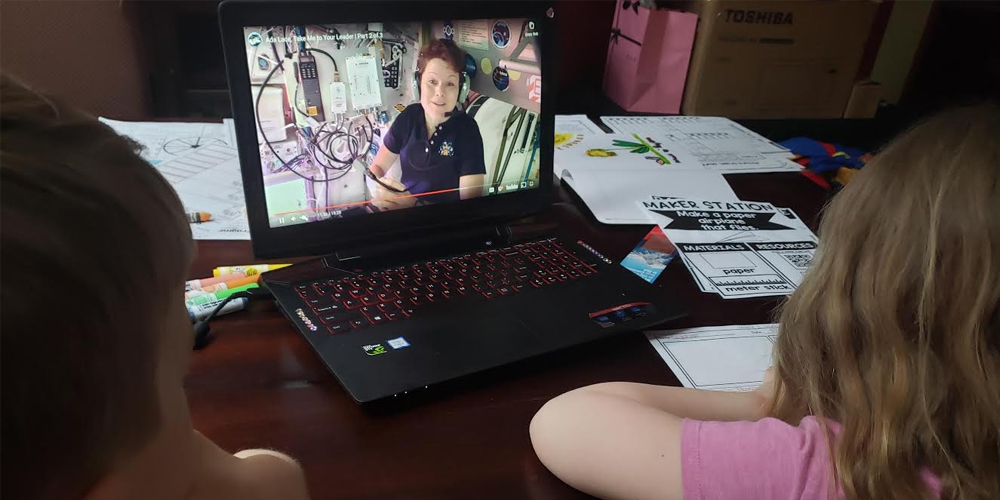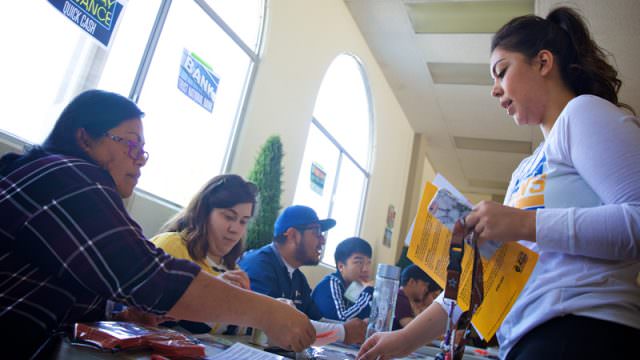Adventist schools are adapting to keep up under a new reality.

It’s early morning as the alarm clock goes off, much later than it usually would on a school day. Patrice Jenkins, Hinsdale Adventist Academy third- and fourth-grade teacher, gets up and goes through her new morning routine of reviewing her lesson plans and preparing for her online video class at 10:00 a.m. with her students.
This is the new normal for the Chicago-area teacher, as well as other educators across the Lake Union Conference church region in the United States, after the abrupt closure of schools as the nation confronts the Covid-19 pandemic.
The Lake Union region has 70 Adventist schools with an enrollment of 2,851 students taught by 275 teachers. Under normal circumstances, schools would need several weeks to provide training, preparation, and new structure to make distance-learning a smooth transition. But amidst the logistical, pedagogical, and emotional layers of shifting to distance learning, teachers, students, and administrators are learning lessons in resiliency and creativity.
Adjustment Period
Lake Union associate education director Ruth Horton says that teachers have quickly adjusted to various digital learning platforms, including Google Classroom, Google Meet, Zoom, and Office 365 Teams software. They have also adapted to new teaching/learning plans, content coverage, and learning experiences for students. “While not necessarily an easy, fluid journey,” Horton says, “teachers are committed to providing students a rich and meaningful learning opportunity.”
Patrice Jenkins, the Hinsdale Adventist Academy teacher, had never used Google Classroom before. In the process of transitioning, she taught herself how to use the program while additionally using Google Slides and Zoom. “I do a lot of hands-on project learning, so I knew it’d be a challenge for both my students and me to go digital,” Jenkins says. “But I knew it could be done after making sure each of my students had access to online learning.”
To prepare her students’ parents for the transition, she invited her classroom parents in for a meeting prior to the quarantine orders to learn how to manage Google Classroom along with her, so they would know how to help their children with distance learning.
Imagine having to roll out an online plan on the first day of starting a new job. That was the case for principal and science teacher Fabiola Andre of Chicago Seventh-day Adventist Christian School. Andre’s first day as the new principal and science teacher was planned for March 23, but quarantine orders closed schools across the state, and Andre wasn’t able to meet with faculty, parents, or students in person.
Despite the setback, Andre wrote letters to parents and called each of them to introduce herself and share her ideas, goals, and vision while seeking parental input on what they wanted to see happen during distance learning. She even offered a special program for science and math, and each student who participated received a personalized spring break certificate. “She’s been doing a phenomenal job during this transition, even though she hasn’t even been at the school,” says Helen Bryant, Lake Region Superintendent of Education.
Early Adopters
While many schools have been thrust into a steep learning curve, Indiana Conference teachers have long had to adapt to digital learning in the event of unforeseen school closures.
Indiana is a voucher state, which means public funds are available for students to use toward private school education, and one of the mandates is that schools prepare for five e-learning days every year. Tom Coffee, Indiana Conference Superintendent of Education, said, “While not fully prepared for this situation, our teachers in Indiana have been somewhat prepared for online learning.”
Michigan Conference had also begun preparing its schools by making sure they had contingency plans. “We are blessed in the Michigan Conference to have a tremendously dedicated educational team,” says Jeremy Hall, Michigan Conference school superintendent, in a release. “Before the gathering restrictions that were put in place, the Education Department asked our schools to have a contingency plan in place should the need arise for us to no longer deliver face-to-face instruction. So, when the mandate came down that schools were closing, we were able to activate this plan with a little more preparation time.”
Interactive Lessons
Even though distance keeps teachers and students apart, teachers are finding inventive and fun ways to stay connected with their students and send their community some love at the same time.
Earlier in the year, Ivelisse Lozano, first- and second-grade teacher at Milwaukee Seventh-day Adventist School North Campus in Wisconsin, had taken her students to visit an assisted living facility. Since the social distance orders were put in place, the students have been creating encouraging messages for those at the living facility and taping their notes and pictures to the outside of the facility’s windows so the residents can see and enjoy them.
Meanwhile, in Michigan, Kalicia Clements, Charlotte Adventist Christian School principal and teacher, found a fun way to get some fresh air and exercise while making special appearances at her students’ homes. While hosting her Zoom class, she and her husband rode their bikes down the road. While passing the home of one of her students, the student was excitedly waving from their porch. After hearing about the ride-by, her other students began to plead with her to ride by their house as well.
Missing the personal connection to her students, Hinsdale teacher Jenkins came up with a fun way to stay connected with her students by sending them an “I Miss You” letter in the mail. “I really enjoy the Zoom calls, but I wanted to send my students a personal postcard,” Jenkins says. She created a postcard, wrote a letter to each of her students, and dropped them in the mail.
Fourth-grader Max Murrill says he was elated to receive one of those letters. “I’ve never gotten a letter before,” he says, and promptly wrote a letter back.
Another fun classroom experience for Max was a scavenger hunt. His mother, Melissa, laughingly recalled watching her son run around looking for items, such as a fork, during his virtual class scavenger hunt.
Carmen Magray, K-2 teacher at Green Bay Junior Adventist Academy in Wisconsin, sent her students on a bear hunt. After listening to the book We’re Going on a Bear Hunt during their video class, they talked about where they would like to look for bears if they could go on their own bear hunt. They wrote stories and shared them during their virtual class. Each of the K-2 students also had a fun time decorating a window of their house with a bear display, showing where they found their bear on their bear hunt.
“Although our students and teachers find themselves at a greater physical distance, teachers are taking advantage of this opportunity to continue connecting and ministering to student needs,” writes Laurie Snyman in an update from Michigan Conference. “This national crisis has positioned the Adventist teacher to be the face of consistency to our students, sharing God’s love each and every day.”
The original version of this story was posted by the Lake Union Herald.








